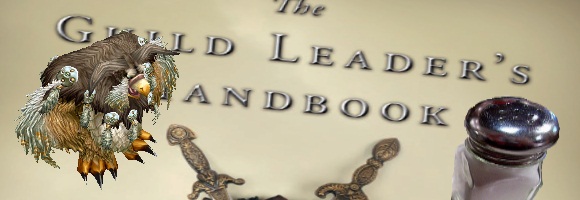See that image up there? That is one annoyed looking cat. Looks as if someone took away his toy or threatened him with a bath. That’s the same look I exhibit when someone comes complaining to me.
But hey, it comes with the guild leader territory.
Listening to complaints. It probably takes up around 15% of communications.
(Actually, file that post idea away. “Percentage of matters that occupy guild leader time”).
Most of the time, it’s just hot hair or someone wants to get something off their chest. Generally, complainers aren’t really taken seriously. But y’know? Every so often, there’s a legitimately dissatisfied player.
If you really want to lodge a solid complaint, you need to identify if what you want is an actual change or you just want to vent.
Too often in guilds, players are exposed to people complaining about something.
Maybe it’s someone’s performance.
It could be their lack of attendance.
Perhaps the raid just takes too long to get going.
You know, if you’re looking to secure some kind of change in policy or the way things are done, then effective complaining is called for. If it’s for the second reason (emotional comfort), then really, all you’re looking for is someone to listen to you.
My advice? If you’re going to complain because you want something done differently, figure out exactly what your end game is. The most ineffective complaint is the one where there’s no objective.
What is the end result of your complaint?
Here’s some examples:
- Consistent faster pulls
- Less off-topic discussion during raid
- More booze during break
Once you figure out the outcome, identify the person capable of delivering it. You don’t harass the Warrior if you don’t have any food or water, right?
If I’m on the receiving end of a complaint, I instinctively put up walls because I know what’s coming. Being conscious of this, when I’m lodging a complaint to others (a legitimate one, mind you), I make an effort to be calm and polite.*
Ask yourself this.
Are you looking for results or the satisfaction of being right?
* My friends have picked up on this. When they notice I‘m super extra nice, they immediately get suspicious.
When following through with your complaint, start off with a cushion. This is a statement that prevents your target from feeling that they’re being attacked. Follow it up the meat and potatoes which contains the concern that you want resolved. Then finalize it with a statement proving that you’re not crazy or insane. You want that statement to prove that you are a reasonable person who would greatly benefit from the assistance.
Here’s a fictitious example:
Problem: Concerned about excess, off-topic chatter during a raid.
Solution: Additional focus on the encounters that matter
“Hey Jarvis,
I appreciate the hard work and energy you expend running the raid. Our raid group is an energetic and talkative bunch of players. Can we get them to tone it down during progression boss encounters? The raid would proceed much smoother and efficiently allowing us to get out earlier and awarding everyone precious relaxation time.
Bonus: They get to socialize in a less pressured environment.”
Signed,
Buster
Let’s break it down.
I appreciate the hard work and energy you expend running the raid.
Jarvis is the raid leader. This guy puts up with just about everything and is the linchpin. He might not get too many pats on the back but this is your way of recognizing the little things he’s doing.
Our raid group is an energetic and talkative bunch of players.
You’re reframing and putting a positive spin on the problem. The raid tends to discuss stuff that’s not relevant to what’s going on. This could be due to excess energy or a lack of focus. But, hey, you don’t really know the root cause. Maybe they’re just hyper from all the gummy bears.
Can we get them to tone it down during progression encounters?
Now we’re getting to what you really want. For the sake of your sanity and to prevent yourself from verbally destroying someone, you’re asking the boss if he can do something to calm players down. Maybe all they need is a firm reminder. Who knows? You don’t care how it’s done as long as it’s done. I will add that it’s a nice touch to offer a solution or two that you feel might work.
The raid would proceed much smoother and efficiently allowing us to get out earlier and awarding everyone precious relaxation time.
This is where you appeal to the rewards section. As my uncle Lawrence Reciprocicus always asks when someone calls on him for a favor, “What’s in it for me?”
You want to offer something mutually beneficial that your target would appreciate. In this case, a smoother raid and an earlier clear time.
Now the next time you feel the urge to throttle someone or want to stab a pen through your raid’s eyes, consider voicing your concerns to your leaders first. You gotta do it with discipline and serenity! Violence is never the answer!


